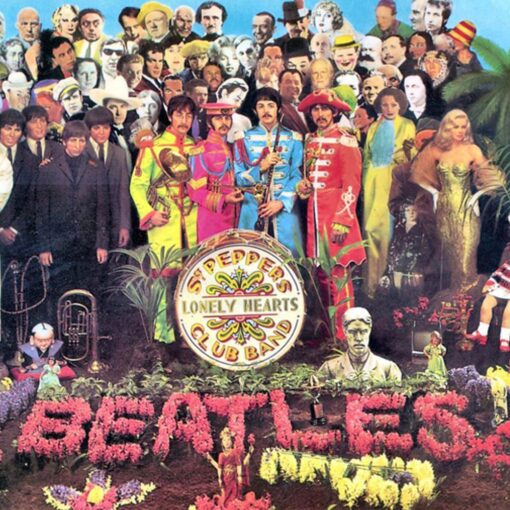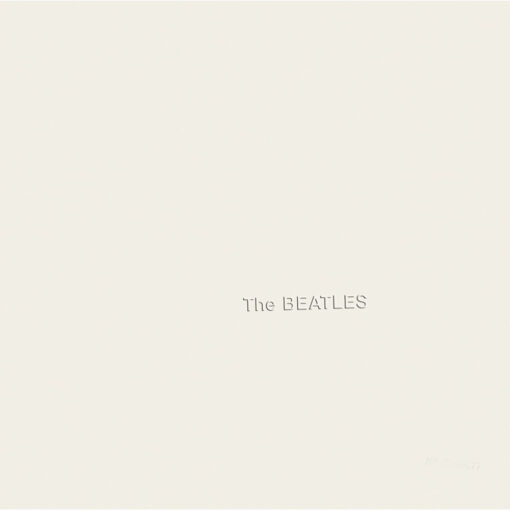- Published on 1968
- Author: Lennon/McCartney
- Track 8 on “The Beatles – White Album“
PAUL 1968: “The idea of ‘Happiness Is A Warm Gun’ is from an advert in an American paper. It said, Happiness is a warm gun, and it was ‘Get ready for the long hot summer with a rifle,’ you know, ‘Come and buy them now!’ It was an advert in a gun magazine. And it was so sick, you know, the idea of ‘Come and buy your killing weapons,’ and ‘Come and get it.’ But it’s just such a great line, ‘Happiness Is A Warm Gun’ that John sort of took that and used that as a chorus. And the rest of the words… I think they’re great words, you know. It’s a poem. And he finishes off, ‘Happiness Is A Warm Gun, yes it is.’ It’s just good poetry.”
JOHN 1972: “They all said it was about drugs, but it was more about rock ‘n roll than drugs. It’s sort of a history of rock ‘n roll… I don’t know why people said it was about the needle in heroin. I’ve only seen somebody do something with a needle once, and I don’t like to see it at all.”
JOHN 1980: “A gun magazine was sitting around and the cover was the picture of a smoking gun. The title of the article, which I never read, was ‘Happiness Is a Warm Gun.’ I took it right from there. I took it as the idea of happiness after having shot somebody. Or some animal.”
About “Happiness is a Warm Gun”
“Happiness Is a Warm Gun” is a complex and intriguing song featured on 1968 “White Album.” Released on November 22, 1968, the song is primarily attributed to John Lennon, although it carries the joint songwriting credit of the Lennon-McCartney partnership.
Recorded at both Trident Studios in London and EMI Studios (Abbey Road Studios), the track stands out for its intricate and diverse musical structure. It seamlessly weaves together various musical styles, including rock, doo-wop, and ballad elements, showcasing the Beatles’ musical versatility.
Lyrically, “Happiness Is a Warm Gun” is enigmatic and open to interpretation. John Lennon drew inspiration from various sources, including newspaper articles and Timothy Leary’s book “The Psychedelic Experience,” resulting in a collection of disconnected images and phrases. The title itself was derived from a headline in a gun magazine.
One of the song’s distinctive features is its complex vocal harmonies, which are characteristic of many Beatles compositions. The piece also includes shifts in tempo and style, reflecting the band’s willingness to experiment with their music.
Upon its release, the song’s title caused a degree of controversy due to its association with firearms. However, John Lennon clarified that the phrase was taken out of context and was intended to convey a warm, positive feeling rather than to glorify violence.
“Happiness Is a Warm Gun” has received critical acclaim for its innovative structure and lyrical complexity, solidifying its status as one of John Lennon’s most enigmatic and challenging compositions. Over the years, the song has been covered by various artists, underscoring its enduring appeal and influence.
In summary, “Happiness Is a Warm Gun” stands as a testament to the Beatles’ willingness to push musical boundaries and explore unconventional themes. It remains a fascinating and thought-provoking piece in their extensive discography.+
Meaning of “Happiness is a Warm Gun”
Penned primarily by John Lennon, the lyrics of this song are intentionally enigmatic and abstract, allowing for a wide range of interpretations. The title itself, “Happiness Is a Warm Gun,” was inspired by a headline from a gun magazine, adding an intriguing layer to its meaning. The song is often viewed as a collection of disconnected images and phrases, drawn from various sources like newspaper articles and Timothy Leary’s book “The Psychedelic Experience.”
The lyrics are vivid and evocative, painting a series of intriguing pictures. The opening lines convey a sense of intimate familiarity or perhaps detachment, using striking imagery to convey complex emotions or experiences. References to a man with multicolored mirrors on his boots suggest a kaleidoscope of experiences and perspectives in a diverse world. Allusions to significant historical events, like the shot that killed King, are presented in an abstract and fragmented manner.
The line “Mother Superior jumped the gun” can be interpreted in multiple ways, possibly indicating an authority figure acting hastily or making a premature decision. The chorus, “Happiness is a warm gun (bang, bang, shoot, shoot),” is a central and ambiguous phrase. It has been interpreted in various ways, with some seeing it as a commentary on the allure of power or the seductive nature of violence. Other lines express physical intimacy and a metaphorical trigger may evoke a sense of closeness and vulnerability.
The lines “I don’t know what I want / But I know how to get it” suggest a mix of uncertainty and pragmatism, highlighting a practical approach to fulfilling desires. The song concludes by reiterating the enigmatic chorus.
The lyrics of “Happiness Is a Warm Gun” intentionally present a fragmented and abstract narrative, inviting listeners to find their own meanings and interpretations. This enigmatic quality has contributed to the song’s enduring status as a subject of discussion and analysis among fans and scholars alike.
Personnel
- John Lennon – double-tracked lead vocal, backing vocal, electric guitar, Hammond organ
- Paul McCartney – bass guitar, backing vocal, piano
- George Harrison – lead guitar, backing vocal
- Ringo Starr – drums, tambourine


